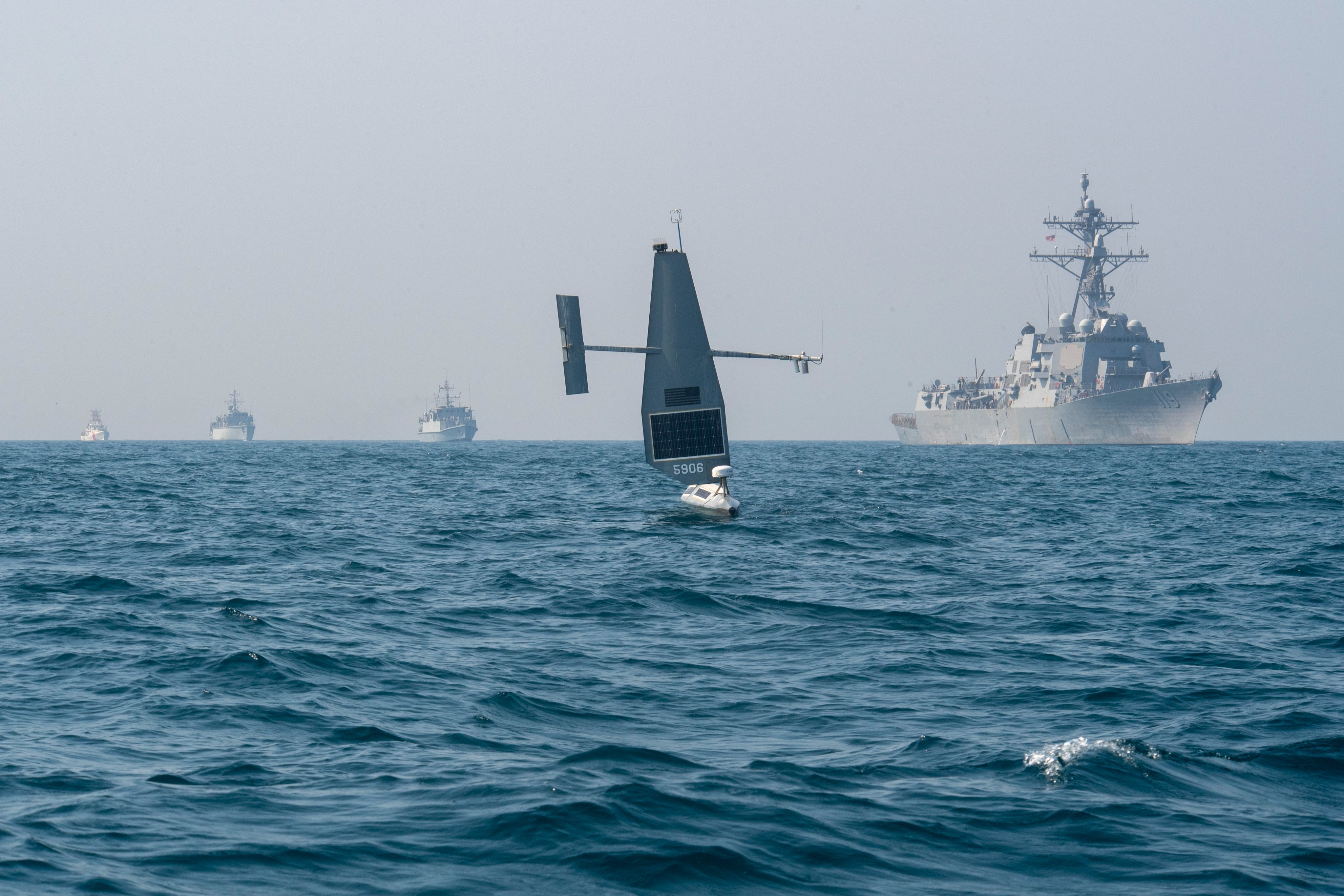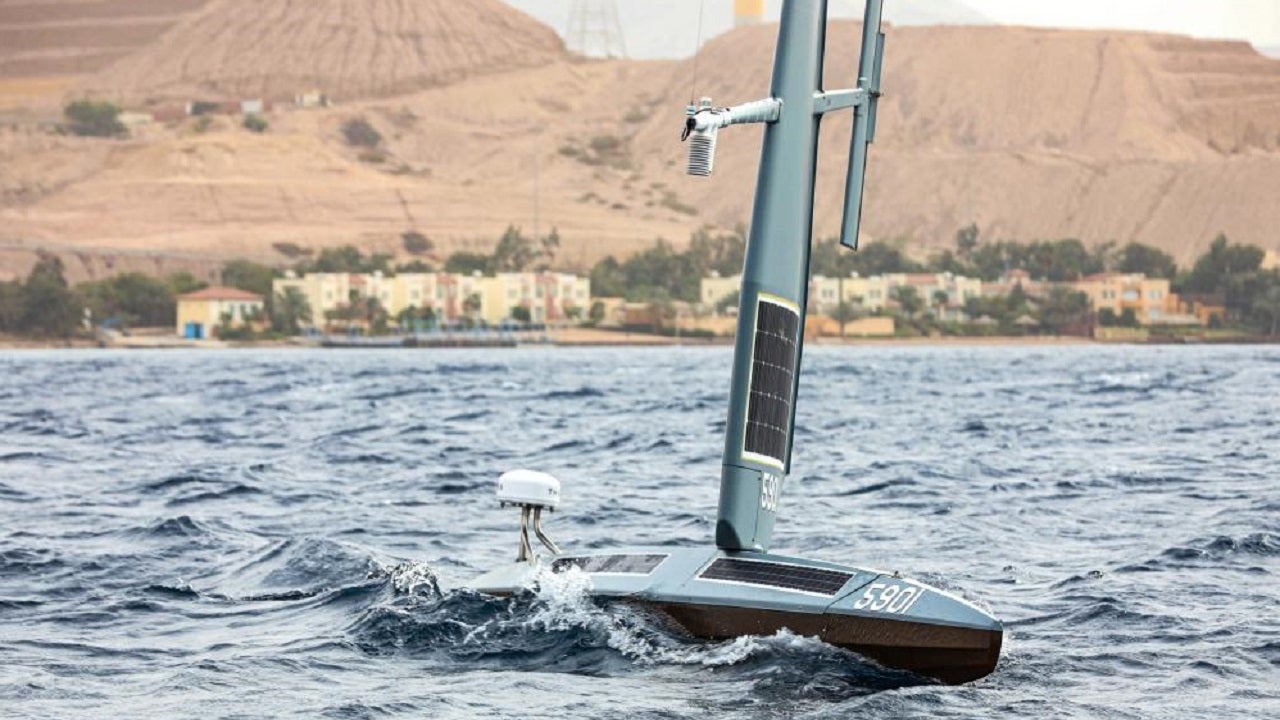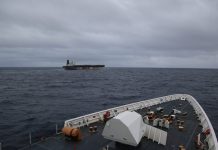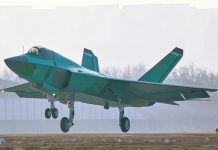On October 7, the US and UK conducted a joint drone exercise in the Persian Gulf to operate the same unmanned surveillance ships that Iran recently captured in the region.
Commander Timothy Hawkins, a spokesperson for the Navy’s 5th Fleet stationed in the Middle East, said that the exercise on Friday comprised two American and two British warships in the Persian Gulf and three Saildrone Explorers.
During the exercise, the drones looked for targets in the ocean, then transmitted the still pictures that their cameras had captured to the warships and the command center of the Fifth Fleet in the island nation of Bahrain. The images were analyzed by an artificial intelligence system there.
?: Unmanned surface vessels operate in the Arabian Gulf, Oct 7, providing an enhanced picture of the surrounding seas for crewed ships from the ?? and ?? during exercise Phantom Scope. pic.twitter.com/dKAyCZ0Zvk
— U.S. Naval Forces Central Command/U.S. 5th Fleet (@US5thFleet) October 7, 2022
The Saildrone Unmanned Surface Vessel (USV) commenced operations in the Gulf on January 27. This was started as a part of a mission to integrate cutting-edge unmanned technology and artificial intelligence into US 5th Fleet operations.
In 2021, the unmanned Task Force 59 of the 5th Fleet was activated. The Navy employs a range of drones, including long-range aerial surveillance drones, torpedo-shaped underwater drones, and surface vessels like the Sea Hawk and the Sea Hunter.

The US Navy, however, has mainly expressed a strong interest in Saildrone. The Saildrone Explorer USV is designed to gather data from the sea autonomously that can be analyzed and used for different applications.
The drone can spend a lot of time at sea and is essential for the region, with almost 5,000 miles of coastline. The coastline extends from the Suez Canal through the Red Sea, the Strait of Hormuz, and the Persian Gulf.
It is a vast region beyond the capabilities of the Navy and its allies and has experienced several attacks since the collapse of the atomic agreement. Additionally, the Strait of Hormuz continues to be essential for international commerce and energy supply because a fifth of all traded oil flows through it.
“No matter what forces you have, you can’t cover all that,” Hawkins told The Associated Press. “You have to do that in a partnered and innovative way,” he added.
In August and September, in an extraordinary chain of events, the Iranian Navy captured US Navy Saildrone Explorer unmanned surface boats (USVs) in the Red Sea. However, Iran released the drones after the US Navy reached the sites. The Saildrones that were involved in the Red Sea incident lost their cameras.
Following this event, the US Navy’s surface drone program came under fire from a US lawmaker. US Representative Elaine Luria, a Navy veteran and vice chair of the House Armed Services Committee (USV), earlier said that it is not the right moment for the Navy to make significant investments in autonomous surface boats.
US Navy’s Presence In The Region
While conducting a separate drone drill, the US Navy urged commercial shippers in the Middle East not to interfere with their operations. It announced that it would continue to use drones in the region.
In alerts sent to shippers and sailors in the area starting on October 6, the Navy highlighted its intention to continue using the drones. It stated that the drones’ Automatic Identification System trackers would continue to transmit their locations.
The drone exercise also comes when the US and Iran are still at odds on the high seas, discussions over Iran’s shattered nuclear agreement with international powers are deadlocked, and protests are roiling the Islamic Republic.
Meanwhile, Iran views drones with distrust since it has long compared America’s presence in the region to its policing of the Gulf of Mexico. In August and September, Iranian forces captured Saildrones under the pretext that they presented a threat to nearby ships, but without offering any supporting documentation.

“Recent events notwithstanding, we have been operating these systems safely, responsibly, and under international law and will continue to do so,” Hawkins said.
“US Navy (drones) are US government property and will lawfully operate in international waters and through straits in accordance with internationally recognized rights and freedoms,” the Navy said in the notice. “Any interference with US Navy (drones) will be considered a violation of the norms of international maritime law,”
On the other hand, monitoring the movement of Iranian ships in the region is a little challenging. AIS trackers are intended to be left on at all times. Still, Iranian ships frequently turn them off to conceal their movements as Tehran is subject to international sanctions due to its nuclear program and human rights violations.
- Contact the author at ashishmichel@gmail.com
- Follow EurAsian Times on Google News




